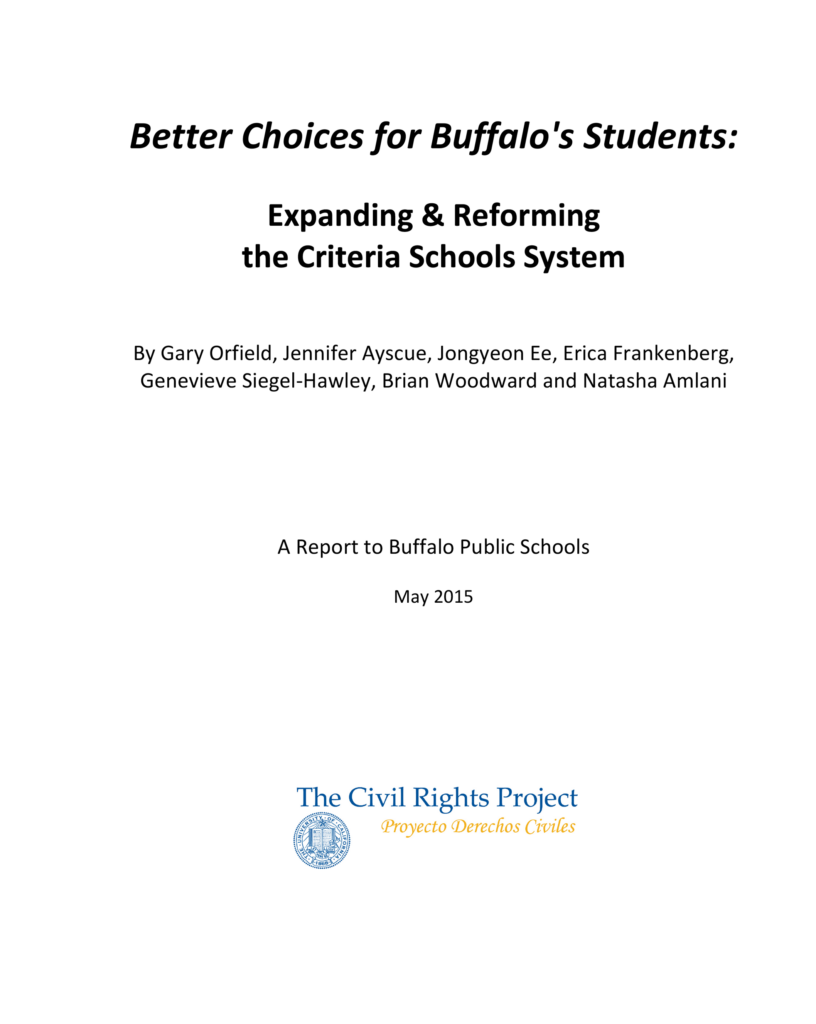Over the years, the city schools developed methods of selecting students that ignored issues of race and poverty and tried to find neutral and fair ways to admit students. As the white population declined sharply and the most desirable schools admitted few students from some parts of the poor nonwhite areas, there was criticism and conflict which eventually produced a civil rights complaint to the U.S. Department of Education’s Office for Civil Rights (OCR). After an OCR investigation produced evidence of racial inequality, OCR and the Buffalo Public Schools agreed to jointly sponsor this study with the hope of developing a stronger, fairer choice system. We were given a broad assignment to do that. To answer the questions, we obtained and analyzed a great deal of data from the school district and elsewhere, visited and talked with many people across the city, and conducted surveys of parents, teachers, administrators, staff, and students about the issues. We are now proposing a set of changes that we believe would offer better choices in a more equitable way to many more students and, we hope, could help the city school district, its teachers and its staff to compete more effectively and be a vital part of turning around a city that has suffered from a very long decline.
As families and educators know, access to a strong school with motivated faculty and students and a challenging educational program can be a life-changing experience. Buffalo has a small number of excellent schools, but its families need more such opportunities and people in all parts of the city need to have confidence that their children have a fair chance to experience them. That confidence does not currently exist.
We believe that there is a win-win solution that is not about dividing scarcity but increasing the offerings and fostering positive diversity, not taking the scarce seats in the schools that many want to attend from one group and giving to others but creating more winners, working together, in all parts of town. Fixing this system cannot address other educational reforms that the city clearly needs in non-criteria-based schools but it can be a solid step forward, creating momentum for future reforms and building confidence in the system’s ability to do some very important things very well.
We recommend the kind of changes most Buffalo teachers and parents favor. This report was triggered by resolving civil rights problems, but we believe that the solutions we propose would be significant steps toward the creation of a more vibrant and competitive public school system. This is not a proposal to undermine existing successes, but to expand and create more. Nothing in it calls for lowering academic standards…
To read the complete Foreword and report, see the attached document on this page.
In compliance with the UC Open Access Policy, this report has been made available on eScholarship:
